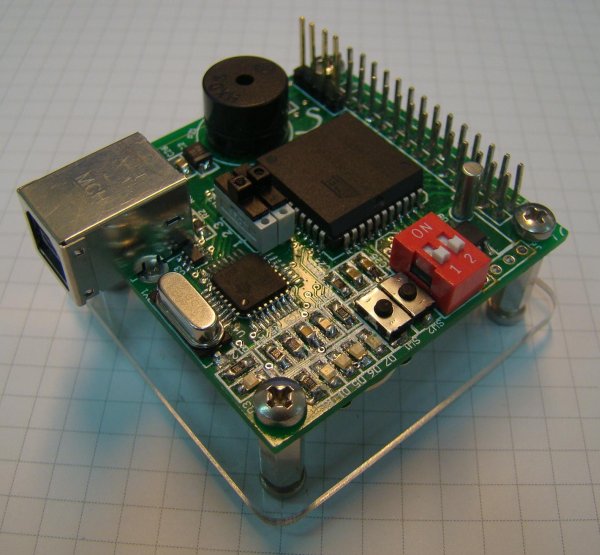In my last projects, I always use the same CPU. DSETA board, I say in the posts. Well, here it is, a CPU based on the AT89C51RE2 microcontroller from Atmel. I develop this board for some reasons. The first and main one is because I want to have a small board with a great (an known) 8-bit microcontroller, ready to use and with many of the peripherals I usually use. The other reason is that I want to test the PCB service from Seeedstudio, a PCB manufacturer from Shenzhen, China. Here are the results.
- The Hardware
The schematics of this board can be found here: DSETA CPU Scheme. There’re many pages in the design: I like to divide schematics in functional blocks, and I usually use one (or more) pages to each block, independently of the number of components. Here’s a brief description of each block:
Power Supply. Based on the MC33269DT low dropout voltage regulator. Output is fixed to 3.3V, and with 1.0V dropout, is perfect for a 5V input from USB port. This input voltage can be find in the output connector. This allows power other boards with these 5V or power this board with an external +5V and don’t use the USB port. A green led (D1) indicates the board is powered.
Microcontroller: AT89C51RE2, from Atmel. The core of the board. I select this device for some reasons. Mainly, because I work with this family some time ago, and I’ve a great experience with this chips. I know the internal architecture (it’s an improved 8051 core), and I’ve experience with the Keil C51 compiler. This device has many features: It’s compatible with the 8051architecture, ISP that allows programming in circuit using standard VCC, and a high speed architecture: it can run up to 60MHz. Flash memory is up to 128 KB, and it has a 8KB expanded RAM. The rest of the features can be found in the datasheet. Here in Spain, you can find this chip for less than 4€.
USB-Serial bridge. Based on the TUSB3410 chip, from Texas Instruments. I’ve been using for 6 years, and it works fine, I’ve never had any problem with it. The schematic is based on the application note from Texas. To work with this device, you need the driver for PC, to use it as a virtual port. The connector is a B-type, much easy to populate by hand that a micro-USB one.
For more detail: DSETA board, a CPU based on the Atmel AT89C51RE2

